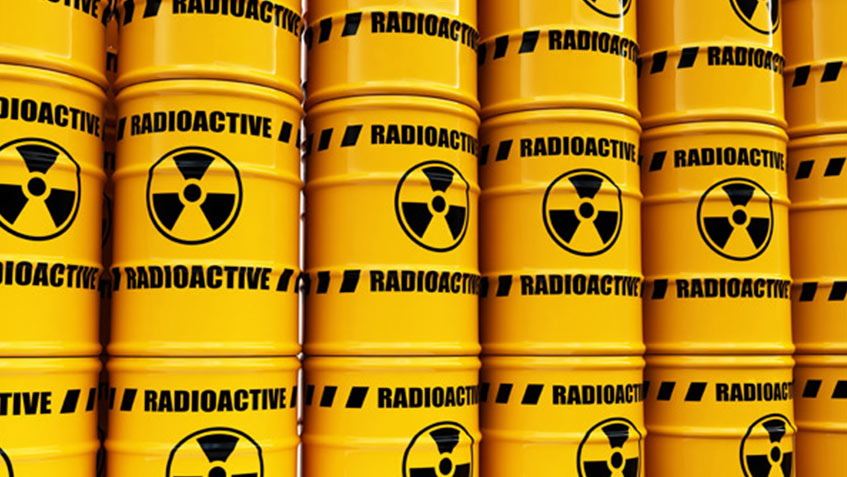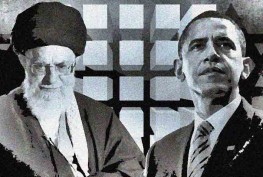Given the secrecy of the P5+1 negotiations on Iran’s nuclear program, it is hard to surmise the concessions being made or the structure of a final settlement. However, one thing is becoming increasingly clear: the path to a nuclear deal will involve many “mini deals” by which Iran’s nuclear program will be slowly “melted” away to a symbolic level in return for a measured release of its frozen oil money and lifting of some sanctions. This “melting strategy by default” is becoming increasingly attractive to both sides, given that the US and Iran cannot publicly and quickly succumb to each other’s “maximum” demands, knowing it will be seen as a “bad” deal by their respective opponents and thus not implementable. Besides, the word “comprehensive” is too loaded with expectations and has by itself become an obstacle.
As a sign that this strategy is at work, both sides are avoiding grand results and are making compromises in increments, with Iran offering disproportionate concessions. For the Rouhani government, this approach helps conceal its concessions from domestic radicals, while at the same time glorifying the meager concessions it receives from the US. For the Obama Administration, the approach helps minimize pressure from the Congress and stakeholders like Israel and Saudi Arabia, who demand tougher measures against Iran. In the face of these “opponents,” it would have been, and will be, hard if not impossible for the two sides to arrive at the desired “comprehensive deal” in a rush.
To maintain the “incremental momentum,” negotiations have resumed in Geneva after a short lull despite the fact that Iran and the P5+1 (the US, the UK, France, Russia, China and Germany) “missed” their second deadline on November 2014 to reach a comprehensive deal on the basis of the Geneva Joint Plan of Action (JPA) signed in November 2013. The first deadline had been set for last July, only 4 months apart from the second. A third deadline has now been set for July 1, 2015, seven months later from the second. Reportedly, Iran, pressed by economic woes, wanted a shorter interval, but France convinced others that a longer time interval was needed. With Iran “disarmed” of its “nuclear ambition,” the urgency has also rescinded.
The temporal dimension is certainly a crucial issue as the parties need more time to figure out what extra compromises they can make in the next stage towards the desired comprehensive deal. However, for that groundwork, Iran and the US in particular would also need to bring on board their apathetic opponents, who would only acquiesce if the concession increments are seen to their political advantage. These obstacles also existed when the parties negotiated the JPA but that agreement, which was reached in a rush, had an urgent and temporary character, and was billed as a “framework” rather than a “comprehensive” deal.
The JPA gave the first indication that a “melting strategy by default” was at work. Iran committed to “never” and under “no circumstances” develop or seek nuclear weapons. It also agreed to nullify most of its 20 percent enriched uranium, reduce operating centrifuges to half and remove all advanced IR2 centrifuges from operation, cap the amount of enriched uranium to less than 10,000 Kg, stop work on and accept modifications on the Arak Heavy Water Plant, halt enrichment at the Fardo underground facility, and allow the International Atomic Energy Agency (IAEA) unrestricted inspection. In return for downsizing and halting its nuclear program, Iran was promised access to less than 5 percent of its frozen oil money and temporary relief from a few sanctions; significantly, the list did not include sanctions on banking, oil, and the UN resolutions.
As the IAEA has confirmed, Iran over-implemented its commitments in the subsequent months. Even if the issue of Iran’s possible intention to weaponize before 2003 was not explicitly included in the JPA, Iran has in vain tried to cooperate with the IAEA to settle this disputed matter. The agency is asking for inspection of certain military sites and access to scientists and unspecified documents. Iran has provided massive information, allowed inspection of the Parchin site, and has also offered access to the Marivan region, where Iran is suspected to have tested certain explosives. However, it has insisted that no secret documents exist and that interviewing scientists could lead to their identification and subsequent murder as in the past.
The P5+1, mainly the US, has also delivered on its commitments though with stiffness and delays. In one case, the US, using the “loophole” in the JPA, even imposed fresh sanctions on a number of Iranian entities who had allegedly violated the US sanction regulations. In spite of this cooperative spirit, the successive negotiations were increasingly inhibited by tougher demands by the US and stiffer resistance by Iran. The standard argument for why they failed to reach a comprehensive deal this last November is that they could not agree on the final scale and scope of Iran’s enrichment capacity, and on the extent and timing of sanctions relief for Iran. The dispute over Iran’s missile programs was certainly another obstacle.
For the US, concern regarding Iran’s enrichment capacity is directly related to the so-called breakout time – the time it would take Iran to develop a bomb clandestinely. For Iran, lifting of sanctions was more than just an economic concern; it would silence the so-called hardliners in Iran who continue to argue that the US cannot be trusted. Lacking trust in the Islamic regime, the P5+1 is seeking a “bullet proof” deal that eliminates Iran’s ability to ever develop clandestine bombs and missiles capable of delivering them. This requires that Iran is left with a symbolic enrichment capacity and smaller missile programs. To achieve this “normal” condition, the US insist that key sanctions will have to remain including the UN resolutions.
These “standard” arguments about why a comprehensive deal could not be reached have merits but they do not tell the full story. A deeper concern of the negotiators was how to “sell” the deal they would reach to their respective domestic and foreign opponents who would invariably view it as a “bad deal.” To them, there was only one sure solution: forego a comprehensive deal in favor of letting sustained negotiations gradually melt Iran’s nuclear, and hopefully its missile, programs in return for gradual trickle of sanctions relief. This “melting strategy by default” would also save the “huge investment of time and prestige” the parties had put into the nuclear negotiations while preventing a disastrous collapse.
Hence, despite the “vast differences,” the parties emphasized the “significant progress” being made and agreed to another extension of the negotiations. However, to move forward, another mini deal had to be struck. Thus, the JPA was extended and a new set of concessions was agreed upon. Accordingly, Iran committed to giving up certain other parts of its nuclear program in return for access to another small percentage of its frozen oil money. Specifically, Iran agreed to eliminate the remaining stockpile of 20% enriched uranium, stop research and development on advanced centrifuges, forego laser enrichment technology, and permit the IAEA to double the frequency of its snap inspections.
Significantly, Iran has reportedly even considered the US proposal to ship part of its low enriched uranium to Russia for re-importation in the form of fuel rods. If true, this concession will be the sign that with the nuclear program melting away, the Islamic Revolution is fading away as well. The key aim of the 1979 revolution was national “independence,” a slogan directed at the colonial practices to which Iran had been subjected. One such practice, which has been said to have caused the country’s underdevelopment, is the so-called old international division of labor. Accordingly, Iran was forced to produce raw and semi-finished materials for conversion into final products by the imperial powers.
This last extension of negotiations also includes an interesting twist to the process: instead of setting one seven-month deadline, it actually sets two deadlines within that same time interval, one for arriving at a “political framework” and another one for arriving at a “comprehensive deal.” This innovation is intriguing because arriving at the political framework will be easier and its achievement will be heralded as a sign of a major success to come, which will in turn allow for subsequent concessions to be made easier. Significantly, this twist will reinforce the “melting strategy by default” and help negotiations to move to another future deadline.
Indeed, as the “comprehensive” approach has failed, the “melting strategy by default” has become the “melting strategy by design,” helping sustain the negotiations. Thus, the next round of negotiations may not also end in a “comprehensive deal,” but rather to yet another mini deal and extension, setting the next deadline with a longer time interval within which a few deadlines will be incorporated. In other words, negotiations will not simply collapse or produce a comprehensive deal but continue in a step-wise fashion producing mini deals. The only wild card in this scenario is the Supreme Leader; he could withdraw support for the melting approach as concessions reach his “red lines” for the Rouhani government.
One such red lines relates to Iran’s missile programs. As was reported in an important interview by Parliamentarian Mahmoud Nabavian with the Raja News, Iran has agreed to have its missiles discussed but demands for their downsizing will suggest a push for “disarming” Iran and will result in a breakdown of the negotiations. As Nabavian disclosed, Secretary John Kerry “crossed many of Iran’s red lines” during his meeting with Foreign Minister Javad Zarif in Oman, making Zarif leave the meeting thinking that the negotiations would have to stop. Iran subsequently returned to the Vienna negotiations and agreed to further nuclear concessions in return for more money. Most likely, the missile time bomb has been left for the current negotiations.




